What Is Sisal and What Is it Used For? Common Uses & FAQ
-
Jeff Weishaupt
- Last updated:
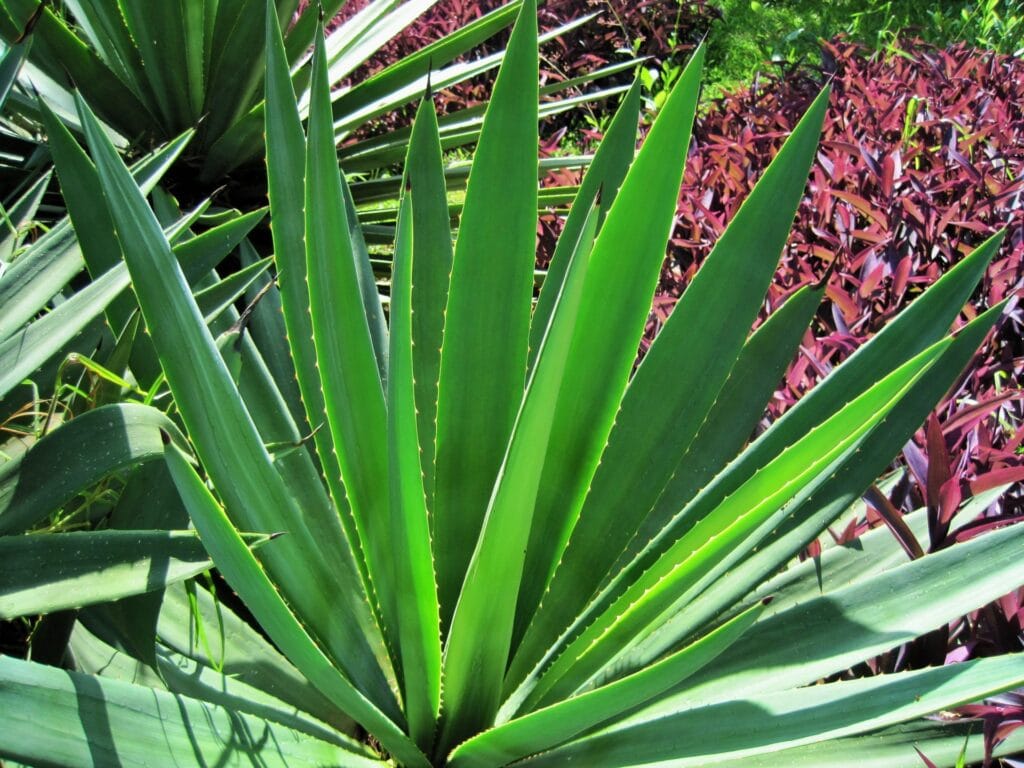
Derived from a flower native to Southern Mexico, sisal fiber is a material that may fascinate you. It hasn’t always been well-known worldwide, but you may have heard of the material as natural fiber carpets and rugs have become more popular.
They became increasingly popular recently as people opt for more sustainable alternatives to synthetic materials. Although the material is most often used for carpeting, it also has many other applications, such as twine, a replacement for silk fiber, cat scratching posts, and more.
If you’re interested in using sisal around your home, you’re at the right place. Keep reading to learn how this material is manufactured, what it’s used for, and its different types.
 How Does Sisal Work?
How Does Sisal Work?
The term “Sisal” can either refer to the Mexican-native plant or the fiber derived from it. Today, we’ll discuss sisal fiber, which is used to make carpets, rope, twine, and other materials. Other uses of fiber include paper, footwear, hats, geotextiles, and cardboard.
Additionally, sisal fiber reinforcements can also contribute to rubber, concrete, and composite fiberglass products.
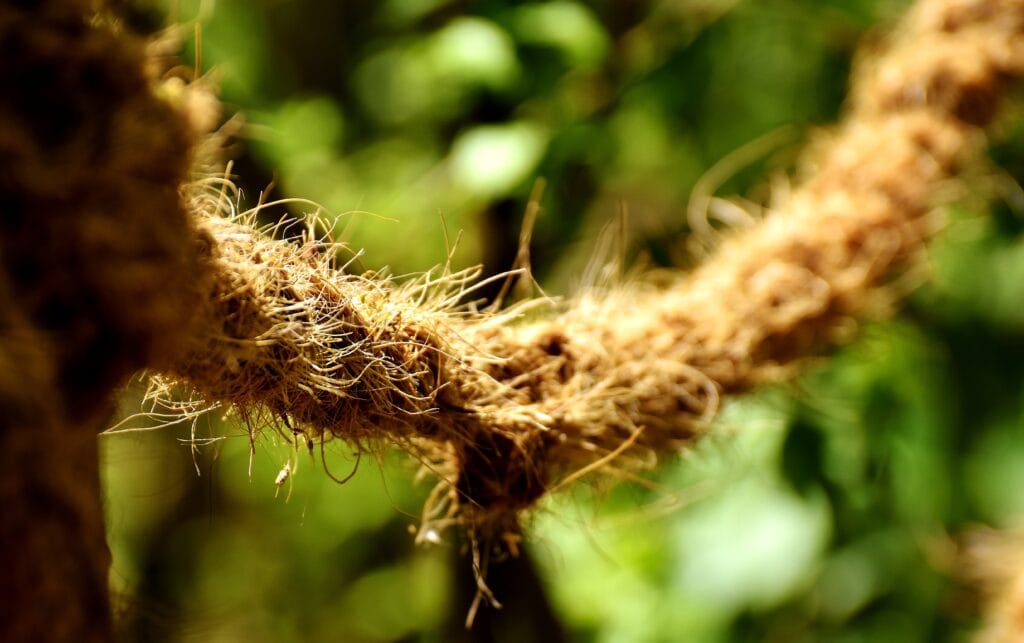
The Plant
Of course, sisal fiber is derived from the plant sisal, scientifically known as agave sisalana. This flowering plant is native to Southern Mexico, but it’s also cultivated around the world. Its fiber is stiff and most often used to make rope.
The plant’s lifespan ranges from 7–10 years, producing 200 to 250 commercially usable leaves per plant. Each leaf has over 1,000 fibers, which only make up 4% of the plant’s weight. This plant is best grown in the tropics and subtropics, benefiting from temperatures over 77 °F.
Their sword-shaped leaves are placed in a rosette formation, standing 5–7 feet high. You may notice small teeth along the margins of young sisal leaves, which are lost pretty soon.
Fiber Extraction
Sisal fiber is extracted via a process called decortication. It includes crushing, beating, and brushing the sisal leaves with a rotating wheel of blunt knives. At one point, only the leave’s fibers remain.
East Africa has the highest sisal production rate, which is where they transport the leaves to a central decortication plant. There, they use water to wash away the unnecessary parts of the leaves.
Then, they dry, brush, and bale the fiber for export. It’s crucial to ensure that the sisal fiber is properly dried since that is what its quality largely depends on. It’s proven that artificial drying is better at reducing moisture content than sun drying.
Of course, sisal is also produced in less industrialized countries, so artificial drying may not be feasible. However, North-east Brazil has a dry climate, which is where they use smallholders to grow sisal and portable raspados to extract the fiber.
Finally, the sisal fiber is cleaned with brushes to remove unwanted content. Once they’re machine combed and separated into respective grades, the process is complete. The grading typically depends on the in-field separation of the fibers’ size.
What Are the Different Types of Sisal?
The sisal leaf can produce three types of sisal, including mechanical, ribbon, and xylem sisal.
Mechanical
The mechanical fibers of sisal are majorly extracted from the plant’s leaf periphery. With a horseshoe shape, their thickness doesn’t allow them to separate during the extraction process. As a result, mechanical fibers are the most commercial use of the sisal plant.
Ribbon
Ribbon sisal fibers are placed along the leaf’s median line with the conducting tissues. These are the longest fibers you can find in the sisal leaf. Unlike the mechanical sisal fibers, these ribbons separate longitudinally in the extraction process.
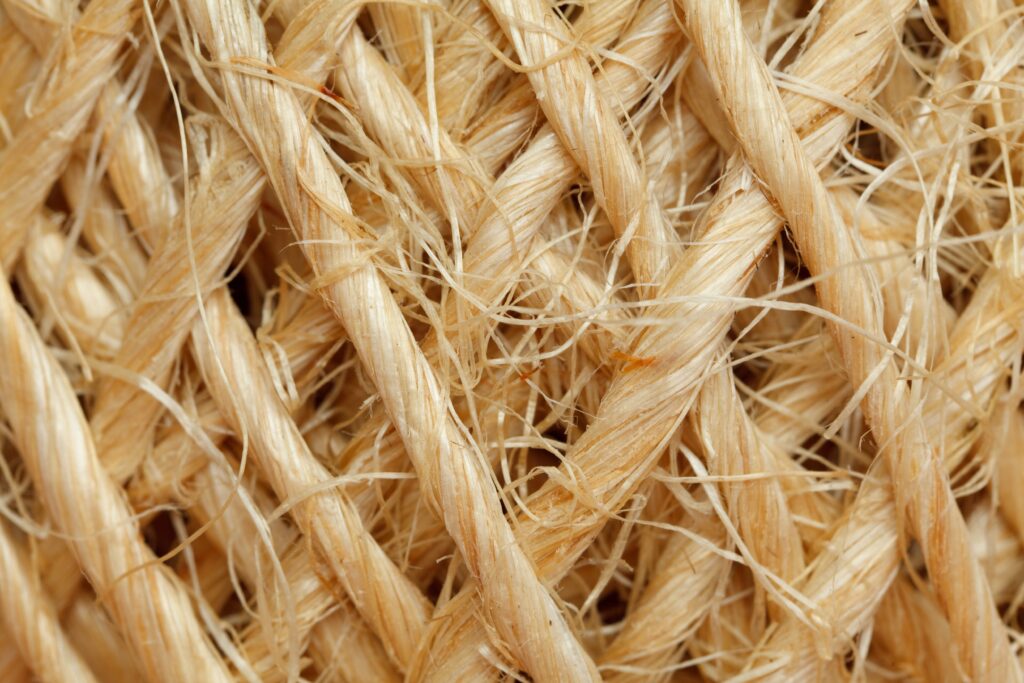
Xylem
Lastly, xylem sisal fibers are known for their irregular shape. They’re grown opposite to the ribbon sisal fibers due to the connection of vascular bundles. They consist of thin-walled cells, which allow them to separate and get lost during the extraction.
Grades
Depending on their size, sisal fibers are also divided into various grades. Here’s what you must know about sisal fiber grades.
Grade 1
Grade 1 sisal fibers are 3 feet tall with a creamy white color. This grade of fiber must not have detective decortication or improper brushing. Other than that, it must be free of tousled and bunch ends, knots, tows, un-decorticated barks, and harshness.

Grade 2
Grade 2 sisal fibers are 2.5 feet tall with a creamy white color. This grade of fiber must not have detective decortication or improper brushing. Other than that, it must be free of tousled and bunch ends, knots, tows, un-decorticated barks, and harshness.
Grade 3L
Grade 3L sisal fibers are 3 feet tall with a white and brownish color. This grade of fiber must not have detective decortication or improper brushing. Other than that, it must be free of tousled and bunch ends, knots, tows, un-decorticated barks, and harshness.
Grade 3 or 3S
Grade 3 sisal fibers are 2 feet tall with white and brownish color. This grade of fiber must not have detective decortication or improper brushing. Other than that, it must be free of tousled and bunch ends, knots, tows, un-decorticated barks, and harshness.
Grade UG (Under Grade)
Grade UG sisal fibers are 2 feet tall with a brown and spotted appearance, which may occur due to damage. In addition, the leaf may be greenish due to an improper decortication process. This grade fiber must not be black since it means it’s rotting.
Other than that, it must be free of tousled and bunch ends, knots, tows, un-decorticated barks, and harshness.
Grade SSUG (Sub Standard Under Grade)
Grade SSUG sisal fibers are no shorter than 2 feet, with a yellowish and blemished appearance. These fibers do not conform to the UG grade standards, which is why they’re exported as line fiber.
Grade Tow No. 1
Grade tow no.1 sisal fiber has a creamy white color and must be free of tousled and bunch ends, knots, tows, un-decorticated barks, and harshness. Therefore, this fiber is typically left behind in the brushing machines during the process.
Grade Tow No. 2
Grade tow no. 2 sisal fiber has a brownish, spotted, or yellowish appearance. This fiber is typically left behind in the brushing machines during the process. Other than that, it must be free of tousled and bunch ends, knots, tows, un-decorticated barks, harshness, and other grade fibers.
This grade fiber must not be black since it means it’s rotting.
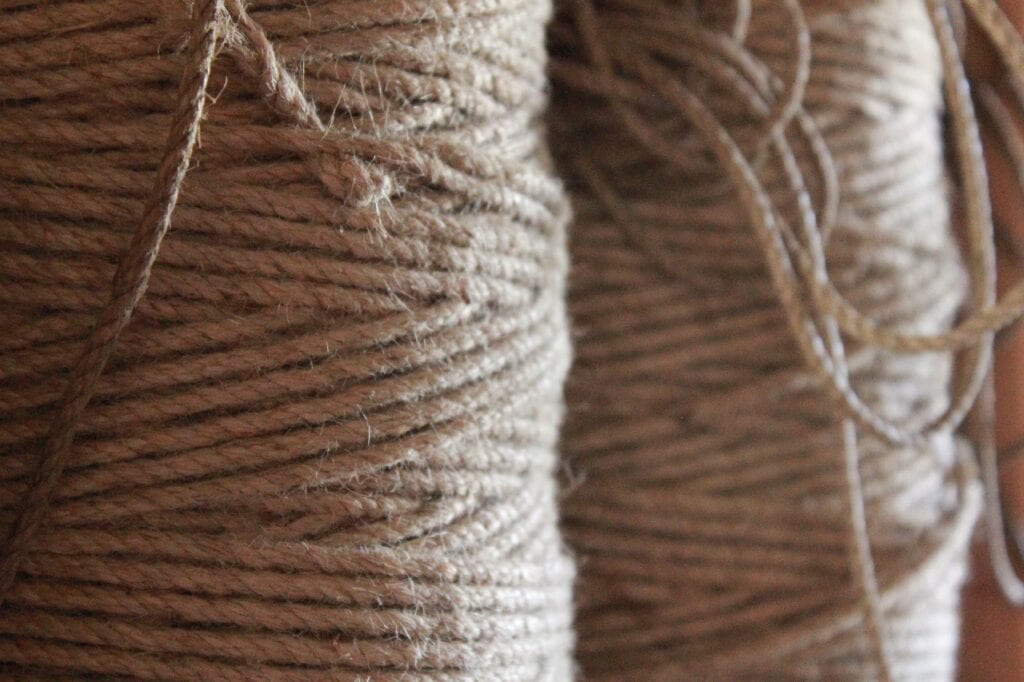
Uncarded Flume Tow
Uncarded flume tow sisal fibers have a creamy white to light brown appearance without any foreign materials, rotten fiber, and un-decorticated leaves. This fiber grade requires proper moisture removal, with the dust content being no more than 15% due to hand extraction.
Additionally, the fibers’ bales must be pressed by 200 kgs of weight per bale.
Carded Flume Tow
Carded flume tow sisal fibers are similar to un-carded ones, except that the dust content must not exceed 10%.
 Where Is It Used?
Where Is It Used?
The sustainability and durability of sisal make it ideal for many uses and applications, including carpets, rugs, and more.
Carpets
Carpets are the most common use for sisal due to the yarn durability of the material. Only high-grade sisal is used to manufacture carpets as these fibers are tougher and stronger. Sisal carpets are also preferred over other fibrous materials like jute.
However, it’s still possible for slight matting to occur in sisal carpeting’s high-traffic areas. But it doesn’t trap dust or build up static, so you can clean it with only a vacuum. If the spill is severe, you may use a fiber sealer or dry-cleaning powder for spot removal.
Sisal fabric is also extremely versatile, absorbing or releasing humidity depending on the climatic conditions. This may cause contraction or expansion within the fiber, which is why it’s best not to use it in rainy or snowy areas.

Replacement for Silk Fiber
Sisal fibers go through endless pulping and beating to turn into silky fabric light enough to be worn in hot climates. Manufacturers weave sisal fibers into almost invisible sheers, making them the perfect replacement for silk. But, of course, there’s a lot of work required to turn sisal into silk, which is why it can be expensive.
Cat Scratching Post
Sisal also serves as an excellent material for a cat scratching post since it’s tough enough for cats to play with it without damaging the post. Additionally, the material is entirely non-toxic, which is why it’s safe to use with your pets.
It resembles the consistency of tree bark, which is the ideal scratching substrate for cats. Due to its durability, you can wait many years before needing to replace it.
Twine
Sisal is also popularly used to create twine, more specifically, agricultural twine in traditional terms. That includes baler and binder twine, especially since sisal is so durable, flexible, and strong.
Additionally, sisal is compatible with most dyestuffs and resists any deterioration caused by saltwater. The best part is that it wins the competition against polypropylene and other haymaking materials and techniques, as sisal serves as the eco-friendly option.
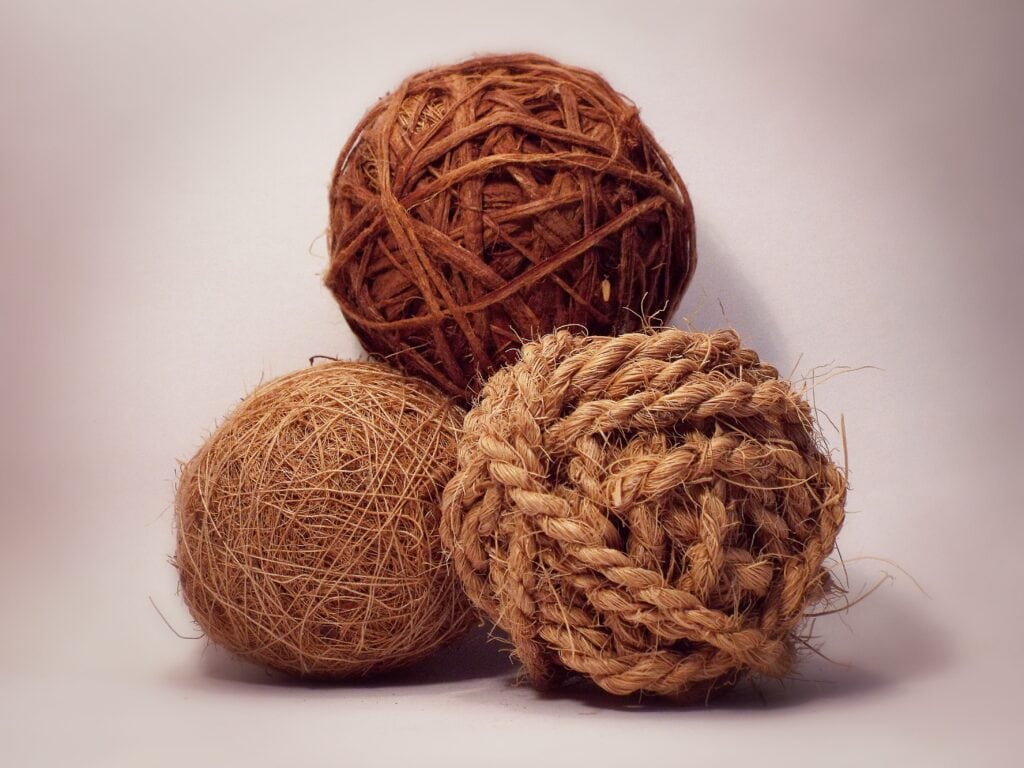
Other Uses
Sisal is best used for general cordage, twines, and ropes, but it also has other uses. For example, it can be used to create affordable specialty paper, geotextiles, wire rope cores, macrame, handicrafts, filters, buffing cloth, and dartboards.
Other than that, it’s an eco-friendly strengthening agent for asbestos and fiberglass replacement in composite materials. That includes various uses, such as the automobile industry. The paper industry typically only uses low-grade sisal fiber since it’s high in cellulose and hemicelluloses.
Meanwhile, the cordage industry uses medium-grade sisal fiber to make baler twine, rope, and binder twine. These ropes are most often used in agricultural, industrial, and marine contexts. Lastly, the highest-grade sisal fiber is used for yarn and carpeting.
Sisal fiber can also be used to create rugs, lumbar support belts, spa products, disc buffers, clothes, and slippers. You may also find sisal wall covering becoming popularized since it meets all American Society for Testing and Materials and the National Fire Protection Association standards.
Advantages of Sisal
Sisal has endless benefits aside from just being eco-friendly and affordable. It’s one of the most durable materials to produce carpets, as well as entirely natural. Sisal fibers are incredibly tough and robust, which is why it’s used in mariner rope and baling twine.
Other than its strength and durability, sisal also has a prized appearance. Its naturally tan, beige, and cream-colored appearance is already attractive, but the material is also compatible with most dyes.
This natural fiber carpeting material is also non-toxic, making it an ideal interior design addition if you have asthma or allergies. It doesn’t emit volatile organic compounds, which you can expect from nylon and other synthetic materials.
So, you can count on sisal to maintain your home’s air quality. The material is also biodegradable as it’s made from sisal plant fibers. If you throw away the carpet, you won’t need to worry about it spending eternity in the landfill.
Additionally, sisal is incredibly low-maintenance, especially as a carpet or rug. You’ll only need to vacuum it regularly to keep it in good shape. The material resists static and is super absorbent, which is why it can act like a natural humidifier in your home.
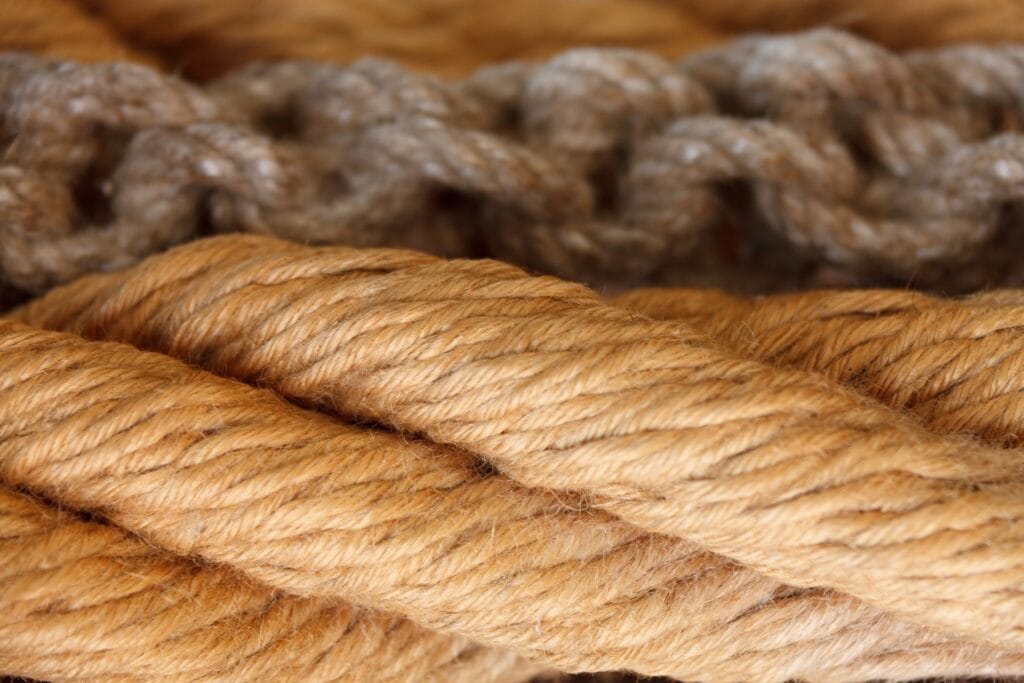
Disadvantages of Sisal
Unfortunately, some of the sisal’s strengths can also double as weaknesses. For example, its absorbency can make it vulnerable to staining, which may be hard to remove. Additionally, its toughness and durability can make it rough to the touch.
The stiff fibers may feel uncomfortable under your feet if you’re new to the material. Sisal is also vulnerable to water damage if the rugs are placed in bathrooms, kitchens, and patios or decks. Once they become wet, they can become slippery and dangerous to walk on.
They can also become slippery if they’re used too often, so you must not place them on stairs. Moreover, the material’s porous nature can make it prone to stains and mildew if you’re not quick with cleaning up spills.
That’s why sisal may disintegrate faster in humid areas, wrinkling, and unable to return to the original conditions.
 Frequently Asked Questions
Frequently Asked Questions
What is the Origin of Sisal Fiber?
Considered a vegetable fiber, sisal is the coarsest of its category. You can find multiple variations of the Agave plant in tropical and subtropical countries. They’re more prevalent in the Central American region, with the most commercially used variation being A. sisalana.
Its hybrids are also used often along with Agave fourcroydes, which are better known as henequen. In East Africa, the sisal plant was found in Yucatan in 1983, while sisal bulbils were produced from Kew Gardens in Kenya a while later.
Sisal production had a difficult start in East Africa but soon prospered, totaling 230,000 tons every year. However, its manufacturing amounts for agricultural twine in East Africa have lowered as industries prefer more specialized end products.
That includes specialty pulps, plaster reinforcement, handicrafts, wire rope cores, dartboards, and carpets. Brazil currently dominates the sisal production market.
How is Sisal Fiber Processed?
The way sisal fiber is processed depends on the intended use. For example, manufacturers may spin sisal fiber bundles into yarn via traditional spinning techniques. That includes carding, drawings, silver formation, silver spinning, bale opening, mixing, and cutting into staple fiber bundles.
Then, they can pile and twist this yarn into twine and rope or produce woven fabrics for various uses, such as gunny bags. You can also use long sisal fibers to produce rope directly from silvers.

What Are the Properties of Sisal?
A sisal fiber is typically 80 to 120 centimeters with a diameter of 0.2 to 0.4 millimeters. A single fiber contains a bundle of smaller, hollow sub-fibers. Manufacturers may reinforce their cell walls with spirally-oriented cellulose inside a lignin and hemicellulose matrix.
As a result, the cell wall becomes a composite lignocellulosic structure reinforced by helical microfibrillar cellulose. The composition itself is best described as multiple layers of waxy substances and ligneous material, bonding the cell to other adjacent neighbors.
This prevents the surface from establishing a robust bond with the polymer matrix. Cellulose is best described as a hydrophilic glucan polymer. It contains a linear lattice of 1-4-bonded and-hydro glucose units.
Such a high presence of hydroxyl groups gives sisal unnecessary hydrophilic properties, leading to poor establishment between the fiber and the hydrophobic matrix. As a result, sisal does not have good moisture resistance.
 Conclusion
Conclusion
Sisal is a sustainable and non-toxic material used to create carpets and rugs that serves as the perfect alternative to synthetic materials. It has endless benefits, such as being low maintenance, biodegradable, and absorbent.
However, it can also be prone to staining and rough to the touch. Now that you know sisal and its pros, cons, and properties, you can invest in your favorite rug or carpet for the perfect eco-friendly addition to your home.
- Related Read: Is Jute Rope Safe For Cats? Can I Keep It Around Them?
Featured Image Credit: JumpStory
Contents
 How Does Sisal Work?
How Does Sisal Work? Where Is It Used?
Where Is It Used?